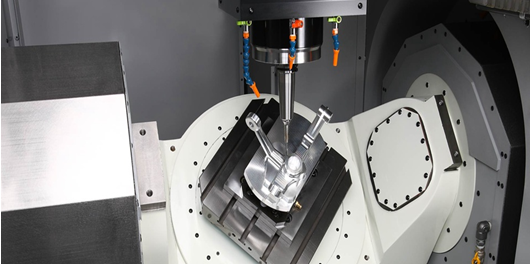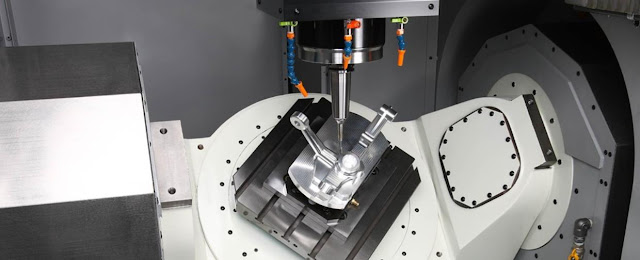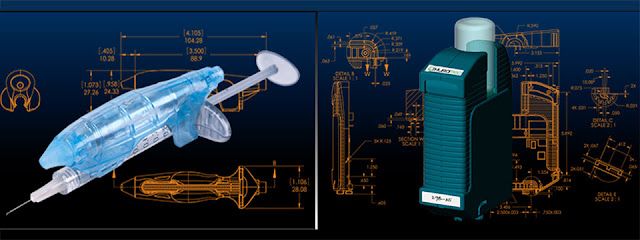How Much You Know About Injection Molding Tool
Injectionmolding is a processing method used in mass production of complex parts of
certain shapes. Here's the specific principle: The plastic raw material melted
by the heat is injected from the screw of the injection molding machine into
the cavity of the injection molding tool. And after cooling and solidifying,
the plastic formed product is obtained.
The injection molding tool consists of two parts, which are a movable mold and a fixed mold. The movable mold is mounted on the moving template of the injection molding machine, and the fixed mold is mounted on the fixed template of the injection molding machine. In the injection molding, the movable mold and the fixed mold close constitute a casting system and a cavity. And when the mold is opened, the movable mold is separated from the fixed mold in order to take out the plastic products. Although the structure of the injection mold may vary depending on the type and performance of the plastic, the shape and structure of the plastic product, and the type of the injection machine, the basic structure is uniform.
Rapid Injection Molds are Classified by Function
It mainly consists of pouring
system, temperature control system, molded part system, exhaust system, g guidance system,
ejection system and so on. The gating system and the molded part are in direct
contact with the plastic and vary with plastics and products. It is the most
complicated and most varied part of the mold, and requires the highest degree
of smoothness and precision.
1. Gating
system
It refers to the part of the flow
channel before the plastic enters the cavity from the nozzle, including the
main channel, the cold material hole, the split channel and the gate.
2. Molded
parts system
It refers to the various parts
and components that make up the shape of the product, including dynamic mold,
fixed mold and cavity (concave mold), core (protrusion), forming rod and so on.
The core forms the inner surface of the article and the cavity (female) forms
the outer surface shape of the article. After clamping, the core and cavity
form the cavity of the mold. According to the process and manufacturing
requirements, sometimes the core and the die are made up of several pieces,
sometimes made into a whole, and only the inserts are used in the parts that
are easily damaged and difficult to process.
3. Temperature
regulation system
In order to meet the mold
temperature requirements of the injection process, a temperature adjustment
system is required to adjust the temperature of the mold. For injection molds
for thermoplastics, the cooling system is primarily designed to cool the mold
(the mold can also be heated). The common method of mold cooling is to open a
cooling water channel in the mold, and use the circulating cooling water to
remove the heat of the mold. In addition to the use of cooling water to pass
hot water or hot oil, the heating of the mold can also be installed with
electric heating elements inside and around the mold.
4. Exhaust
system
It is set up to remove the gas
generated by the melting of air and plastic in the cavity during injection
molding, and the gas is formed on the surface of the product when the exhaust
gas is not smooth. The exhaust system of the plastic mold is usually a slot-shaped
air outlet opened in the mold to discharge the air of the original cavity air
and the gas brought in by the melt.
When the molten material is
injected into the cavity, the air originally stored in the cavity and the gas
brought in by the melt must be discharged to the outside of the die through the
exhaust port at the end of the flow, otherwise the product will have pores and
poor connection. The filling is not full, and even the accumulated air burns
the product due to the high temperature generated by compression. In general,
the vent hole can be disposed at the end of the flow of the melt in the cavity
or on the parting surface of the mold.
A shallow groove has a depth of
0.03-0.2 mm and a width of 1.5-6 mm on one side of the die. During the injection,
the vent hole does not have a lot of melt oozing out, because the melt will
cool and solidify there to block the passage. Do not point the opening of the
exhaust port to the operator to prevent the melt from accidentally squirting
and injuring people. In addition, the matching gap between the ejector rod and
the ejector hole, the matching gap between the top block and the stripping
plate and the core may be utilized to exhaust.
5. Guidance system
It is to ensure that the movable
mold and the fixed mold can be accurately centered during mold clamping, and
the guide member must be provided in the mold. In the injection mold, four sets
of guide columns and guide sleeves are usually used to form the guide members,
and sometimes the inner and outer tapered surfaces are respectively arranged on
the movable mold and the fixed mold to assist the positioning.
6. Ejection system
Generally, it includes thimble,
front and rear ejector plate, thimble guide rod, thimble return spring, thimble
plate locking screw and other parts. When the product is molded and cooled in
the mold, the front and back molds of the mold are separated and opened, and
the plastic product and its aggregate in the flow passage are pushed out or
pulled out of the mold opening and flow path position by the pushing
mechanism-the ejector pin under the push rod of the injection molding machine.
In order to carry out the next injection molding work cycle.
Rapid Injection Molds
are Classified by Structure
It consists of a mold base, a
mold core, an auxiliary part, an auxiliary system, an auxiliary setting, and a
dead angle processing mechanism.
1. Mold
base
1. Mold
base
It can be ordered directly from
the standard mold base manufacturer, greatly saving the time required to design
the mold, so it is called the standard mold base of rapid injection mold. It
forms the most basic part of the rapid injection mold.
2. Mold core
The mold core is the key part of
the injection mold, which is the most important part of the mold. The molded
part of the plastic product is inside the mold core. Most of the time
processing is spent on the mold. However, compared to some relatively simple
molds, it has no mold core, and the product is formed directly on the template.
3. Auxiliary
part
Common auxiliary parts for injection
molds include positioning ring, nozzle bushing, thimble, grab pin, support
column, ejector guide bush guide bush, garbage nail, etc. Some of which are
standard parts, which can be directly ordered with mold base. But some of them
need to be designed by themselves.
4. Auxiliary
system
There are four auxiliary systems
for injection molds: gating system, ejector system, cooling system and exhaust
system. Sometimes, because the plastic material used needs to be heated at a
high temperature, some molds have a heating system.
5. Auxiliary setting
Auxiliary setting of injection
mold includes a ring hole, a KO hole (top stick hole), etc.、
6. Auxiliary setting
When the plastic product has a
dead angle, the mold will have one or more structures that handle the dead
angle, such as sliders, inclined tops, hydraulic cylinders, etc.
Concluding Remarks
In fact, the injection molding
tool is not difficult. We hope this information could help you prepare your
product design for your next rapid prototyping or volume production order. WayKen
is a capable injection mold maker which provides rapid tooling of both aluminum
and steel and plastic injection molding. We will apply the same elaborate
design for manufacturing review when we help you put your product ideas into
practice.




Comments
Post a Comment